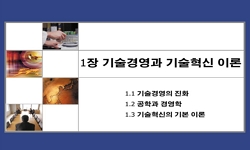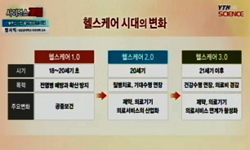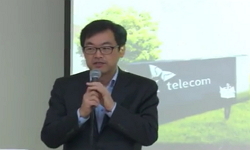환경의 불확실성이 높아질수록 기업의 경쟁력을 위한 성장동력으로서 기술혁신의 중요성은 더욱 강조되고 있다. 기술혁신의 성과를 향상하기 위하여 조직의 지식을 관리하고 조직학습 과...
http://chineseinput.net/에서 pinyin(병음)방식으로 중국어를 변환할 수 있습니다.
변환된 중국어를 복사하여 사용하시면 됩니다.
- 中文 을 입력하시려면 zhongwen을 입력하시고 space를누르시면됩니다.
- 北京 을 입력하시려면 beijing을 입력하시고 space를 누르시면 됩니다.
https://www.riss.kr/link?id=A76535281
- 저자
- 발행기관
- 학술지명
- 권호사항
-
발행연도
2009
-
작성언어
Korean
- 주제어
-
KDC
325
-
등재정보
KCI등재
-
자료형태
학술저널
- 발행기관 URL
-
수록면
1-24(24쪽)
-
KCI 피인용횟수
12
- DOI식별코드
- 제공처
- 소장기관
-
0
상세조회 -
0
다운로드
부가정보
국문 초록 (Abstract)
환경의 불확실성이 높아질수록 기업의 경쟁력을 위한 성장동력으로서 기술혁신의 중요성은 더욱 강조되고 있다. 기술혁신의 성과를 향상하기 위하여 조직의 지식을 관리하고 조직학습 과정을 이해하는 것은 전략경영에 있어서 중요한 주제로 다루어지고 있다. 그렇다면, 기술혁신을 위한 새로운 지식은 어디서 오는 것인가? 조직의 내부에서 오는가, 아니면 외부에서 오는가? 내부와 외부의 지식을 탐색하고 활용하는 기업은 어떤 조직역량을 보유하고 있어야 하며, 이러한 탐색활동이 기술혁신에는 어떤 영향을 미치는가?
본 논문에서는 기술혁신과 가장 중요한 연관성을 갖는 조직역량으로 흡수능력을 제시하고, 기술혁신과 흡수능력의 교호적인 관계를 조명함으로써, 기존 연구에서 다루고 있지 않는 인과관계를 제안한다. 즉, 탐색활동이 흡수능력의 향상에 어떠한 영향을 미치는지에 대한 개념적인 모델을 제시하는데, 흡수능력을 매개변수로 하여 탐색활동이 기술혁신 결과에 어떠한 영향을 미치는지 그 과정을 대상으로 하는 모델을 구축하였다.
본 연구가 제안하는 개념적인 모델에 의하면 기술혁신을 위한 기업의 탐색 활동 중 내부경계 탐색(internal boundary-spanning)은 흡수능력 유형 중 잠재 흡수능력(potential absorptive capacity)을 향상하게 되고 이것은 연구개발 과정에서 연구(research) 단계의 속도에 긍정적인 영향을 미치게 된다. 대조적으로, 외부경계 탐색(external boundary-spanning)은 실현 흡수능력(realized absorptive capacity)을 향상시키고 이것은 개발(development) 단계의 속도를 향상시킨다는 결론을 도출하였다.
다국어 초록 (Multilingual Abstract)
In response to ever increasing environmental uncertainty, technological innovation becomes an important subject of strategic management field. Where does new knowledge for innovation come from? Does it come from inside or outside an organization? What...
In response to ever increasing environmental uncertainty, technological innovation becomes an important subject of strategic management field. Where does new knowledge for innovation come from? Does it come from inside or outside an organization? What kind of organizational capability is required in order to search for and leverage internal and/or external knowledge? How do different search activities influence the performance of technological innovation? This study suggests a conceptual model establishing the recursive relationship between technological innovation and absorptive capacity. More specifically, the model investigates the process of the knowledge search behavior getting translated into the technological innovation performance in terms of R&D speed, with absorptive capacity as a mediating variable. We argue that internal boundary-spanning activity promotes the potential absorptive capacity which, in turn, enhances the speed of research stage of an R&D process. External boundary-spanning, on the other hand, accelerates the speed of development stage of an R&D process, through the realized absorptive capacity. Furthermore, we suggest that both types of absorptive capacity co-evolve with the other having a positive influence on the innovation performance.
목차 (Table of Contents)
- Ⅰ. 문제 제기
- Ⅱ. 관련 이론 및 개념의 정리
- Ⅲ. 연구 모형 및 명제
- Ⅳ. 결론
- References
- Ⅰ. 문제 제기
- Ⅱ. 관련 이론 및 개념의 정리
- Ⅲ. 연구 모형 및 명제
- Ⅳ. 결론
- References
- Abstract
참고문헌 (Reference)
1 김종주, "신제품 개발 과정에서 연구 개발과 생산 간의 조정 및 협력과 두 부서의 환경간 유사성에 관한 연구" 한국경영학회 36 (36): 297-324, 2007
2 Graves, S. B, "Why costs increase when projects accelerate" 32 (32): 16-18, 1989
3 Dushnitsky, G, "When do firms undertake RandD by investing in new ventures?" 26 : 947-965, 2005
4 Garud, R, "Transformative capacity: Continual structuring by intertemporal technology transfer" 15 (15): 365-385, 1994
5 Peters, T, "Thriving on chaos" Knopf 1987
6 Lane, P. J, "The reification of absorptive capacity: A critical review and rejuvenation of the construct" 31 (31): 833-863, 2006
7 Utterback, J. M, "The process of innovation in five industries in Europe and Japan" 23 (23): 3-9, 1971
8 Chesbrough, H. W, "The organizational impact of technological change: A comparative theory of national institutional factors" 8 : 447-485, 1999
9 Vasey, J. T, "The new competitors: they think in terms of speed-to-market" 5 (5): 23-33, 1991
10 Bettis, R. A, "The new competitive landscape" 10 : 449-474, 1995
1 김종주, "신제품 개발 과정에서 연구 개발과 생산 간의 조정 및 협력과 두 부서의 환경간 유사성에 관한 연구" 한국경영학회 36 (36): 297-324, 2007
2 Graves, S. B, "Why costs increase when projects accelerate" 32 (32): 16-18, 1989
3 Dushnitsky, G, "When do firms undertake RandD by investing in new ventures?" 26 : 947-965, 2005
4 Garud, R, "Transformative capacity: Continual structuring by intertemporal technology transfer" 15 (15): 365-385, 1994
5 Peters, T, "Thriving on chaos" Knopf 1987
6 Lane, P. J, "The reification of absorptive capacity: A critical review and rejuvenation of the construct" 31 (31): 833-863, 2006
7 Utterback, J. M, "The process of innovation in five industries in Europe and Japan" 23 (23): 3-9, 1971
8 Chesbrough, H. W, "The organizational impact of technological change: A comparative theory of national institutional factors" 8 : 447-485, 1999
9 Vasey, J. T, "The new competitors: they think in terms of speed-to-market" 5 (5): 23-33, 1991
10 Bettis, R. A, "The new competitive landscape" 10 : 449-474, 1995
11 Lorenzoni, G, "The leveraging of interfirm relationships as a distinctive capability: A longitudinal study" 20 : 317-338, 1999
12 Nonaka, I, "The knowledge-creating company" 69 (69): 96-104, 1991
13 Lind, M. R, "The influence of a convergence in understanding between technology providers and users on information technology innovativeness" 2 (2): 195-217, 1991
14 Boynton, A. C, "The influence of IT management practice on IT use in large organizations" 18 (18): 299-318, 1994
15 DeCarolis, D. M, "The impact of stocks and flows of organizational knowledge on firm performance:An empirical investigation of the biotechnology industry" 20 : 953-968, 1999
16 Crawford, C. M, "The hidden costs of accelerated product development" 9 : 188-199, 1992
17 Turner, K. L, "The Role of Organizational Controls in Managing Knowledge" 31 (31): 197-217, 2006
18 Souder. W. E, "The R&D-marketing interface: Results from an empirical study of innovation projects" 25 : 88-93, 1978
19 Gilad, B, "The Business Intelligence System" American Management Association 1988
20 Keller, R. T, "Technology-information processing fit and the performance of R&D project group: A test of contingency theory" 37 : 167-179, 1994
21 Hargadon, A, "Technology brokering and innovation in a product development firm" 42 : 716-749, 1997
22 Bierly, P, "Technological learning, strategic flexibility, and new product development in the pharmaceutical industry" 43 (43): 368-380, 1996
23 Anderson, P, "Technological discontinuities and dominant designs: A cyclical model of technological change" 35 : 604-633, 1990
24 Tyre, M. J, "Technological change in the production process: Organizational implications and responses" Massachusetts Institute of Technology 1989
25 Ahuja, G, "Technological acquisitions and the innovation performance of acquiring firms: A longitudinal study" 22 : 197-220, 2001
26 Myers, S, "Successful industrial innovations: A study of factors underlying innovation in selected firm" Institute of Public Administration 1969
27 Katila, R. A, "Something Old, something New: A longitudinal study of search behavior and new product introduction" 45 (45): 1183-1194, 2002
28 Smith. P. G, "Shortening the product development cycle" 35 (35): 44-49, 1992
29 Wheelwright, S. C, "Revolutionizing Product Development" Free Press 1992
30 Alavi, M, "Review: Knowledge management and knowledge management systems: Conceptual foundations and research issues" 25 (25): 107-136, 2001
31 Alavi, M, "Research commentary: Technology-mediated learning– A call for greater depth and breadth of research" 12 (12): 1-10, 2001
32 Burkart, E. E, "Research Technology Management" 37 (37): 27-31, 1994
33 Lane, P, "Relative absorptive capacity and interorganizational learning" 19 : 461-477, 1998
34 McGrath, R. G, "Real options reasoning and a new look at the RandD investment strategies of pharmaceutical firms" 25 (25): 1-21, 2004
35 Cohen, W. M, "Protecting their intellectual assets:Appropriability conditions and why U.S. manufacturing firms patent (or not)" National Bureau of Economic 2000
36 Grant, R. M, "Prospering in dynamically-competitive environments: Organizational capability as knowledge integration" 7 (7): 375-387, 1996
37 Olson, E. M, "Patterns of cooperation during new product development among marketing, operations and R&D: Implications for project performance" 18 (18): 258-271, 2001
38 Ghoshal, S, "Organizing competitor analysis system" 11 : 17-31, 1991
39 Damanpour, F, "Organizational innovation:A meta-analysis of effects of determinants and moderators" 34 : 555-590, 1991
40 Daft, R. L, "Organizational information requirements, media richness and structural design" 32 : 554-571, 1986
41 Levitt, B, "Organizational Learning" 14 : 319-340, 1988
42 Katila, R. A, "New product search over time: past ideas in their prime?" 45 (45): 995-1010, 2002
43 Crawford, C. M, "New Product Management" Homewood 1991
44 Henderson, R, "Measuring competence? Exploring firm effects in pharmaceutical research" 15 (15): 63-84, 1994
45 Hisrich, R. D, "Marketing Decisions for New and Mature Products" Prentice-Hall 1991
46 Gupta, A. K, "Managing trade-offs in the new product development process: A German-US comparison" 9 : 11-18, 1992
47 Jansen, J. J. P, "Managing potential and realized absorptive capacity: How do organizational antecedents matter?" 48 (48): 999-1015, 2005
48 Spender, J. C, "Making knowledge the basis of a dynamic theory of the firm" 17 (17): 45-62, 1996
49 Stuart, T, "Local search and the evolution of technological capabilities" 17 (17): 21-38, 1996
50 Kogut, B, "Knowledge of the firm, combinative capabilities, and the replication of technology" 3 : 383-397, 1992
51 Wadhwa, A, "Knowledge creation through external venturing: Evidence from the telecommunications equipment manufacturing industry" 49 : 819-835, 2006
52 Winter, S, "Knowledge and competence as strategic assets, in In The Competitive Challenge: Strategies for Innovation and Renewal" Ballinger 1987
53 Powell, W. W, "Interorganizational collaboration and the locus of innovation: Networks of learning in biotechnology" 41 : 116-145, 1996
54 Kessler, E. H, "Internal vs. external learning in new product development: effects on speed, costs and competitive advantage" 30 (30): 213-223, 2000
55 Kessler, E. H, "Innovation speed: A conceptual model of context, antecedents, and outcomes" 21 (21): 1143-1191, 1996
56 Egelhoff, W. G, "Information-processing theory and the multinational enterprise" 22 : 341-368, 1991
57 Drozdenko, R, "In vivo testing in product development" 3 (3): 120-126, 1986
58 King, B. E, "Impediments to timely delivery of new products at an industrial products firm" 12 : 56-65, 1992
59 Parry, M. E, "Identifying new product success in China" 11 (11): 15-30, 1994
60 Hansen, M. T, "How do multinational companies leverage technological competencies? Moving from single to interdependent explanations" 25 (25): 801-822, 2004
61 Gomory, R. E, "From the ladder of science to the product development cycle" 67 (67): 99-105, 1989
62 Lieberman, M. B, "First-mover advantages" 9 : 41-58, 1988
63 McDonough, E. F, "Faster new product development: Investigating the effects of technology and characteristics of the project leader and team" 10 : 241-250, 1993
64 Meyer. C, "Fast Cycle Time: How to Align Purpose, Strategy, and Structure for Speed" Free Press 1993
65 Ahuja, G, "Entrepreneurship in the large corporation: A longitudinal study of how established firms create breakthrough inventions" 22 : 521-543, 2001
66 Teece, D. J, "Dynamic capabilities and strategic management" 18 (18): 509-533, 1997
67 Galbraith, J. R, "Designing the innovating organization" 10 (10): 3-24, 1982
68 Urban, G. L, "Design and Marketing of New Products" Prentice-Hall 1993
69 Leonard-Barton, D, "Core capabilities and core rigidities: A paradox in managing new product development" 13 : 111-125, 1992
70 Hamel, G, "Competing for the Future" Harvard Business School Press 1994
71 Stalk, G, "Competing Against Time: How Time-Based Competition is Reshaping Global Market" Free Press 1990
72 Bell, G. G, "Clusters, networks, and firm innovativeness" 26 : 287-295, 2005
73 Van de Ven, A. H, "Central problems in the management of innovation" 32 : 590-607, 1986
74 Phene, A, "Breakthrough innovations in the U.S. biotechnology industry: The effects of technological space and geographic origin" 27 : 369-388, 2006
75 Kenney, M, "Beyond mass production: Production and the labor process in Japan" 16 (16): 121-158, 1988
76 Rosenkopf, L, "Beyond local search: Boundary-spanning, exploration,and impact in the optical disk industry" 22 : 287-306, 2001
77 Rothaermel, F. T, "Balancing vertical integration and strategic outsourcing: Effects on product portfolio, product success, and firm performance" 27 : 1033-1056, 2006
78 Henderson, R, "Architectural innovation: The reconfiguration of existing systems and the failure of established firms" 35 : 9-30, 1990
79 Cooper, R. G, "An investigation into the new product process:steps, deficiencies, and impact" 3 (3): 71-85, 1986
80 Nijssen, E. J, "Accelerating new product development: A preliminary empirical test of a hierarchy of implementation" 12 : 99-109, 1995
81 Zahra, S. A, "Absorptive capacity:A review, reconceptualization,and extension" 27 : 185-203, 2002
82 Cohen, W. M, "Absorptive capacity: A new perspective on learning and innovation" 35 : 128-152, 1990
83 Nemanich, L, "Absorptive capacity, improvisation capability, and radical innovation" Strategic Management Society 2008
84 Malhotra, A, "Absorptive capacity configurations in supply chains: Gearing for partner-enabled market knowledge creation" 29 (29): 145-187, 2005
85 Borgatti, S. P, "A relational view of information seeking and learning in social networks" 49 : 432-445, 2003
86 McGrath, R. G, "A real options logic for initiating technology positioning investments" 22 (22): 974-996, 1997
87 Nonaka, I, "A dynamic theory of organizational knowledge creation" 5 : 14-37, 1994
동일학술지(권/호) 다른 논문
-
경영환경, 경쟁전략 및 기업 내부역량 간의 적합성이 성과에 미치는 영향에 관한 연구
- 한국전략경영학회
- 추승엽(Seungyoup Choo)
- 2009
- KCI등재
-
대 흥행(block-buster) 드라마의 조건 : 드라마의 친숙성, 주연배우 지명도, 인터넷 기사(記事) 등이 시청률에 미치는 영향
- 한국전략경영학회
- 김경묵(Gyeong Mook Kim)
- 2009
- KCI등재
-
영상콘텐츠 기업의 업종별 사업다각화가 재무성과에 미치는 요인에 관한 실증연구
- 한국전략경영학회
- 조용래(Yong-Rae Cho)
- 2009
- KCI등재
-
- 한국전략경영학회
- 김병조
- 2009
- KCI등재
분석정보
인용정보 인용지수 설명보기
학술지 이력
| 연월일 | 이력구분 | 이력상세 | 등재구분 |
|---|---|---|---|
| 2026 | 평가예정 | 재인증평가 신청대상 (재인증) | |
| 2020-01-01 | 평가 | 등재학술지 유지 (재인증) |  |
| 2017-01-01 | 평가 | 등재학술지 유지 (계속평가) |  |
| 2013-01-01 | 평가 | 등재학술지 유지 (등재유지) |  |
| 2010-01-01 | 평가 | 등재학술지 유지 (등재유지) |  |
| 2008-01-01 | 평가 | 등재학술지 유지 (등재유지) |  |
| 2005-01-01 | 평가 | 등재학술지 선정 (등재후보2차) |  |
| 2004-01-01 | 평가 | 등재후보 1차 PASS (등재후보1차) |  |
| 2003-01-01 | 평가 | 등재후보학술지 선정 (신규평가) |  |
학술지 인용정보
| 기준연도 | WOS-KCI 통합IF(2년) | KCIF(2년) | KCIF(3년) |
|---|---|---|---|
| 2016 | 1.22 | 1.22 | 1.13 |
| KCIF(4년) | KCIF(5년) | 중심성지수(3년) | 즉시성지수 |
| 1.13 | 1.04 | 2.139 | 0.07 |





 KCI
KCI DBpia
DBpia







